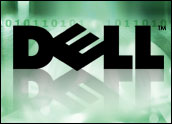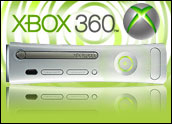
Dell announced Wednesday it will shutter its retail kiosks in shopping malls across the U.S. as it continues with its six-month-old retail store and direct-sales strategy.
Dell launched the Direct Store kiosks in 2002 as a way to give consumers who may have been unfamiliar with its computers the opportunity to touch and try out the systems before making a purchase.
“One of the main goals was to drive people to their Web site. It gave consumers the chance to touch and feel a Dell notebook where consumers didn’t have that opportunity before, which is a main factor in purchasing a notebook. They want to actually see the product and play with it before they make a purchase, especially people buying their first notebook,” said Doug Bell, an IDC analyst.
Sometimes a Great Notion
The kiosks served the purpose of taking Dell a step closer to the consumer and were a good marketing technique, he added.
However, as direct sales of computers began to falter and Dell lost its ranking as the No. 1 computer to HP in 2006, the company began to rethink its consumer sales strategy. Until then Dell’s strategy had focused mostly on desktop sales rather than notebook sales. HP’s success was in large part due to notebook sales, something that did not escape the attention of founder Michael Dell, who took back leadership of the company last year.
“It’s not a surprise since they’ve moved into the retail space. It’s almost like a kiosk competing with a retail store and maybe their agreements with the retail stores had something to do with that. But it makes sense, and they’ll definitely see more volume through the third-party retail channels than through their own kiosks,” Bell told the E-Commerce Times.
‘So Far, So Good’
Dell has a good retail strategy right now and it will take a few years to see how this strategy plays out for them and to rate how important this channel and strategy is, he continued.
“We’ll probably reevaluate in a couple of years, but so far, so good for them in the third-party retail space,” Bell noted.
Evidence of the success of the strategy came at the end of the fourth quarter in 2007, as Dell regained the No. 1 spot among computer makers in the U.S. The company sold some 5.35 million computers, nearly 1 million more than HP, which moved some 4.5 million units.
“[This is] very aggressive on Dell’s part due to the fact that they were almost anti-retail. For a while that was part of their main strategy, so this is a noticeable change in direction for the company, but it has paid dividends in the fourth quarter. You can attribute Dell’s success to the entry into the retail space,” Bell added.
Getting Friendlier
As Dell warmed up to retail, the company entered into a number of deals since June that have taken the one-time direct-sales-only company into big box retail stores like Sam’s Club, Wal-Mart, Staples and Best Buy. What was once a direct-sales-only vendor now makes its computers available at more than 10,000 retail outlets worldwide.
“Moving into retail is a prime example of Dell listening to its customers,” said Tony Weiss, vice president, Global Consumer business at Dell. “Ever since we began our journey into retail, we wanted to give customers the opportunity to call, click or visit Dell and have access to our wared-winning products. This move fits in with how our broad global retail strategy is evolving.”























































Social Media
See all Social Media